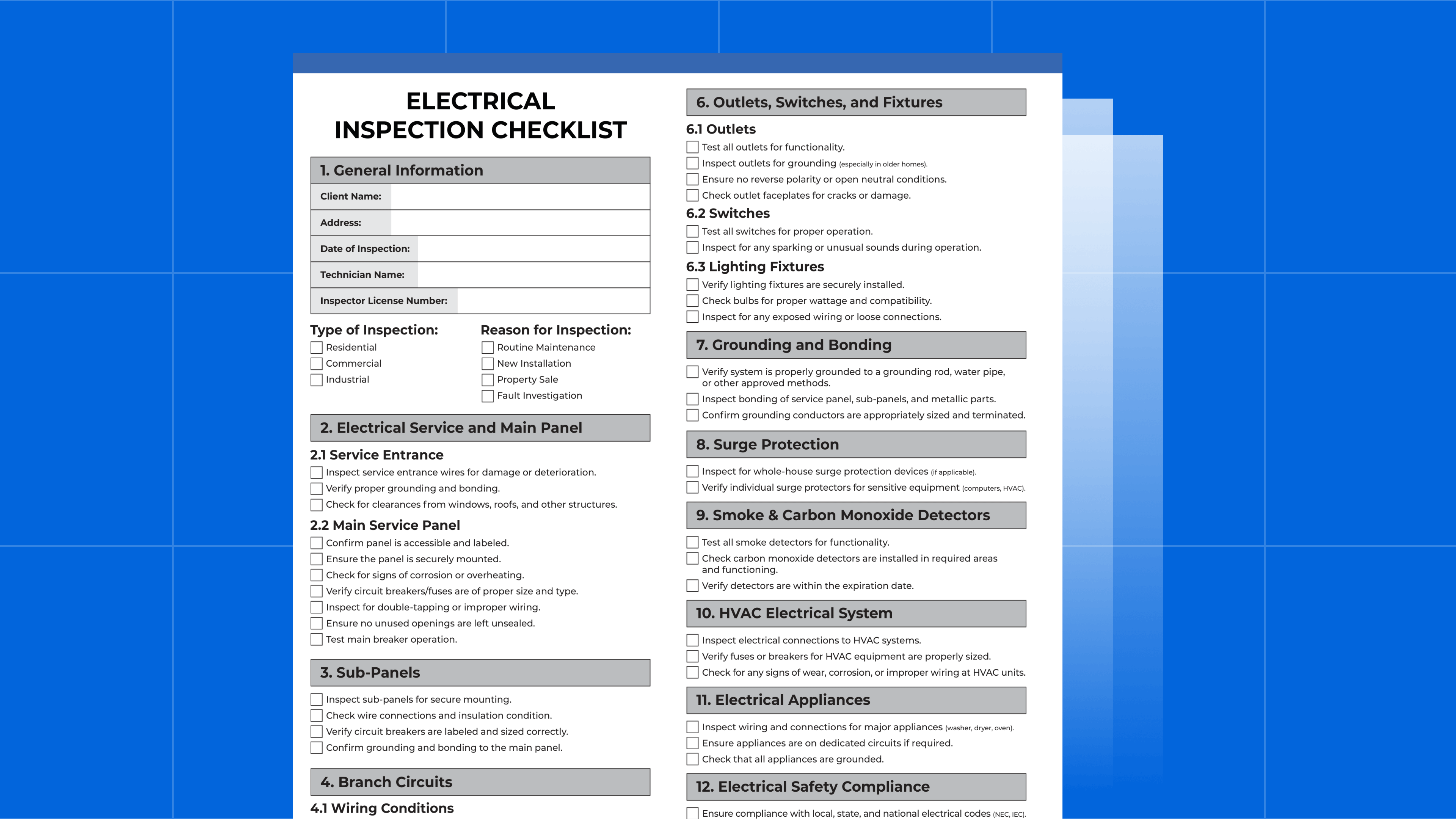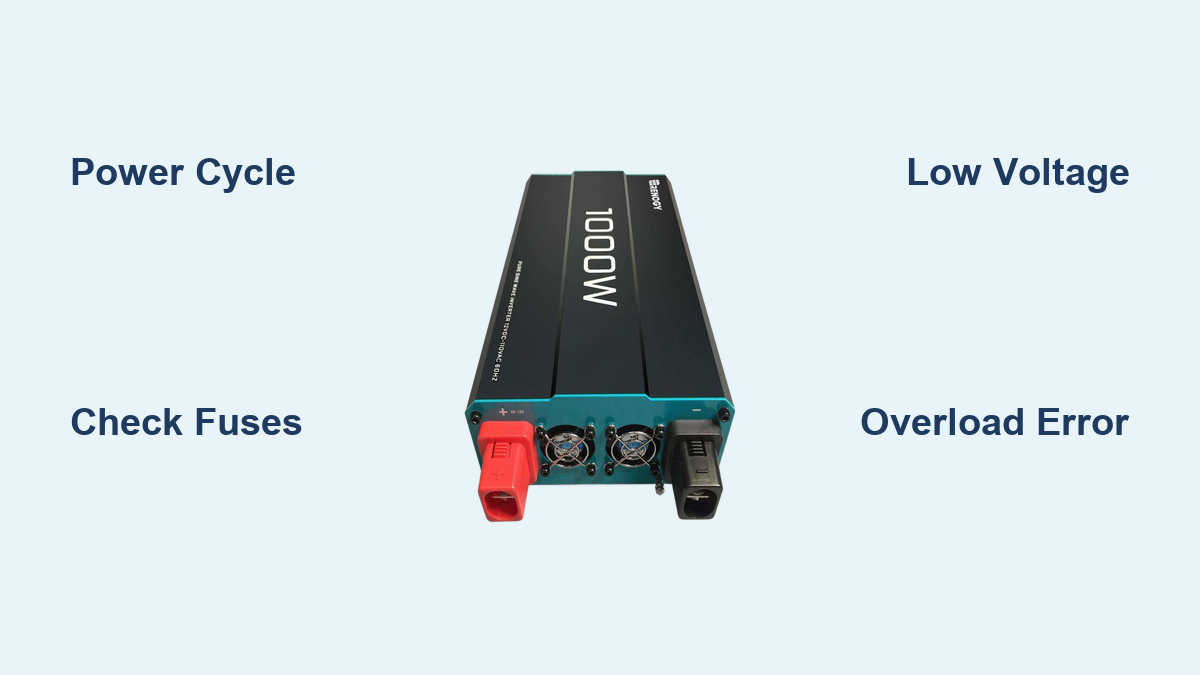Dealing with a malfunctioning Renogy inverter can be incredibly frustrating, especially when relying on off-grid power. A sudden power loss, error codes, or unusual noises can disrupt your entire system. Fortunately, many Renogy inverter issues have straightforward fixes. This guide offers quick troubleshooting steps to get you back up and running, and then dives deep into common problems, detailed solutions, preventative maintenance, and when to call in a professional.
This comprehensive guide will go beyond a simple quick fix, exploring the underlying causes of Renogy inverter problems. We’ll cover everything from basic troubleshooting like checking connections and fuses, to more advanced solutions like diagnosing grounding issues and understanding error codes. By the end of this article, you’ll be equipped to confidently diagnose and resolve most Renogy inverter issues, ensuring a reliable power supply for your needs.
Common Causes of Renogy Inverter Problems
Before diving into fixes, understanding why your Renogy inverter might be failing is crucial. Here are some frequent culprits:
Overload
This is the most common issue. Connecting too many devices exceeding the inverter’s wattage capacity causes it to shut down or display an overload error.
Low Battery Voltage
Inverters require a stable voltage from your battery bank. If the voltage drops too low, the inverter will shut off to protect the batteries.
Poor Connections
Loose, corroded, or undersized wiring can create resistance, hindering performance and potentially damaging the inverter.
Grounding Issues
Improper grounding can lead to erratic behavior, error codes, and even safety hazards.
Internal Component Failure
While less common, internal components like capacitors or transformers can fail over time, especially with heavy use or voltage fluctuations.
How to Fix Renogy Inverter Problems

Here are several methods to troubleshoot and resolve common Renogy inverter issues, ranging from simple checks to more involved repairs.
Method 1: Quick Checks & Resets
This is your first line of defense for simple issues.
Diagnosing the Issue
- Check the inverter’s display for error codes (refer to your Renogy manual for code meanings).
- Verify the DC input voltage is within the inverter’s acceptable range.
- Ensure the AC output is not overloaded.
Fix Steps
- Power Cycle: Turn off the inverter, disconnect the DC input (batteries), wait 30 seconds, reconnect, and turn the inverter back on.
- Check Fuses: Inspect both the inverter’s internal fuses and the fuses in your battery bank and wiring. Replace any blown fuses with the correct amperage rating. Important: Never use a higher amperage fuse than specified.
- Verify Connections: Tighten all DC and AC connections. Look for corrosion and clean connections if necessary.
Testing
Turn on a small AC load (like a phone charger) to see if the inverter powers on and operates normally.
Method 2: Addressing Low Voltage Issues
If the inverter shuts off due to low voltage, address the source.
Diagnosing the Issue
- Use a multimeter to measure the battery voltage under load.
- Check battery state of charge.
- Examine battery terminals for corrosion.
Fix Steps
- Charge Batteries: Fully charge your batteries using a suitable charger.
- Reduce Load: Disconnect some AC devices to lower the power draw.
- Battery Maintenance: Clean battery terminals and ensure proper electrolyte levels (for flooded lead-acid batteries).
Testing
Monitor the battery voltage while the inverter is running. If the voltage drops rapidly, the batteries may be nearing the end of their lifespan.
Method 3: Resolving Overload Errors

Overload errors require careful assessment of your power consumption.
Diagnosing the Issue
- Calculate the total wattage of all devices connected to the inverter.
- Compare the total wattage to the inverter’s continuous and surge wattage ratings.
Fix Steps
- Reduce Load: Disconnect devices until the total wattage is within the inverter’s capacity.
- Stagger Startup: Avoid turning on multiple high-wattage devices simultaneously, as this can trigger a surge overload.
- Upgrade Inverter: If you consistently exceed the inverter’s capacity, consider upgrading to a higher-wattage model.
Testing
Reconnect devices one at a time, monitoring the inverter’s performance and avoiding exceeding its wattage limits.
Prevention Tips and Maintenance Advice

Preventative maintenance can significantly reduce the likelihood of Renogy inverter problems.
- Regularly inspect wiring: Look for damage, fraying, or loose connections.
- Keep the inverter clean and dry: Dust and moisture can cause internal damage.
- Monitor battery health: Regularly check battery voltage and state of charge.
- Avoid exceeding the inverter’s capacity: Plan your power consumption carefully.
- Use a surge protector: Protect the inverter from voltage spikes and surges.
Pro Tips
- Understand Surge vs. Continuous Wattage: Surge wattage is for short bursts, while continuous wattage is for sustained use.
- Use Proper Wire Gauge: Undersized wiring creates voltage drop and heat. Consult a wire gauge chart based on amperage and distance.
- Battery Type Compatibility: Ensure your batteries are compatible with the inverter’s charging profile.
- Ventilation is Key: Inverters generate heat. Ensure adequate ventilation to prevent overheating.
- Keep Manual Handy: The Renogy manual contains specific error code explanations and troubleshooting steps for your model.
- Consider a Remote Monitor: A remote monitor can provide real-time data on inverter performance and battery status.
- Don’t Ignore Warning Signs: Unusual noises, smells, or error codes should be investigated immediately.
Professional Help
Sometimes, DIY solutions aren’t enough. Seek professional help if:
- You suspect internal component failure.
- You’re uncomfortable working with electrical systems.
- The inverter continues to malfunction after trying multiple solutions.
- You notice burning smells or visible damage.
What to look for in a service provider: Experience with Renogy inverters, proper certifications, and a good reputation. Typical repair costs can range from $50 to $200+, depending on the issue and labor rates. Warranty considerations should also be checked before attempting any repairs yourself.
FAQ
Q: What does the “DC Under Voltage” error mean?
A: This indicates that the voltage from your battery bank is too low for the inverter to operate. Charge your batteries or reduce your load.
Q: Can I use any type of battery with my Renogy inverter?
A: No. The inverter is designed for specific battery types (e.g., AGM, Gel, Lithium). Check your inverter’s manual for compatibility.
Q: How do I reset my Renogy inverter?
A: The reset procedure varies by model. Generally, it involves turning off the inverter, disconnecting the DC input, waiting a few minutes, reconnecting, and turning the inverter back on.
Q: What is the difference between a pure sine wave and modified sine wave inverter?
A: Pure sine wave inverters produce cleaner power, suitable for sensitive electronics. Modified sine wave inverters are less expensive but may not work with all devices.
Alternative Solutions
If your Renogy inverter is beyond repair, consider these alternatives:
| Solution | Pros | Cons | Best For |
|---|---|---|---|
| New Renogy Inverter | Familiar brand, known compatibility | Costly | Replacing a completely failed unit |
| Victron Energy Inverter | High quality, robust features | More expensive | Off-grid systems requiring high reliability |
| AIMS Power Inverter | Affordable, wide range of options | May lack advanced features | Budget-conscious users |
Get Your Renogy Inverter Working Again
You now have a comprehensive toolkit to tackle common Renogy inverter problems. Remember to start with the simple checks, systematically diagnose the issue, and apply the appropriate solution. Don’t hesitate to seek professional help when needed.
Following these steps will not only get your inverter back online but also help you maintain a reliable and efficient off-grid power system.
Have you successfully fixed your Renogy inverter? Share your experience in the comments below to help other readers!

